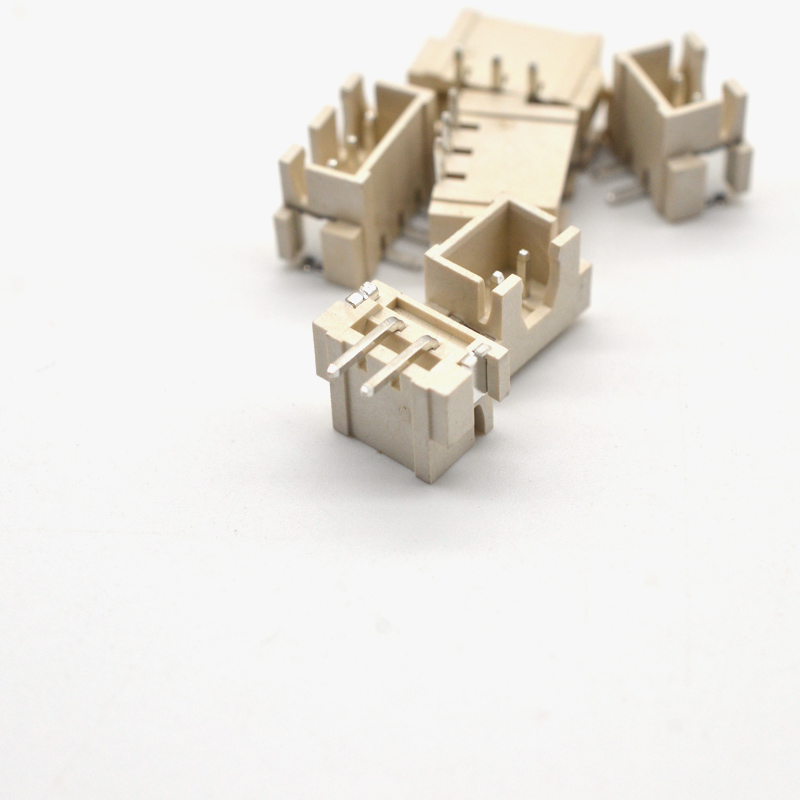วิธีการเชื่อมต่อของอุตสาหกรรมตัวเชื่อมต่อ
Industrial ตัวเชื่อมต่อs are also called ตัวเชื่อมต่อs and plugs. Its function is to connect two active components and act as a current and signal transmission function. With the changes in the application environment, ตัวเชื่อมต่อs ได้มาจากวิธีการเชื่อมต่อที่หลากหลาย โดยมีจุดประสงค์เพื่อปรับให้เข้ากับสภาพแวดล้อมของฉากได้ดีขึ้นและให้การส่งสัญญาณที่เสถียร
1. การเชื่อมต่อแบบเกลียว
นี่เป็นวิธีการเชื่อมต่อแบบดั้งเดิม และจะเป็นประโยชน์ในการทำงานกับส่วนประกอบขนาดใหญ่หรือในสภาพแวดล้อมที่มีการสั่นสะเทือนรุนแรง ข้อดีของการเชื่อมต่อประเภทนี้คือมีความน่าเชื่อถือในการใช้งาน และสายเคเบิลได้รับการแก้ไขโดยแรงเสียดทานของน็อตและเฟือง หากคุณเพิ่มฟิวส์เพื่อป้องกันการคลายตัว เอฟเฟกต์จะดีกว่า ข้อเสียคือความเร็วในการถอดประกอบค่อนข้างช้า และต้องใช้ไฟฟ้าเล็กน้อยในการรื้อด้าย ซึ่งใช้เวลานาน
2. การเชื่อมต่อดาบปลายปืน
นี่คือแบบฟอร์มการเชื่อมต่อที่สามารถเชื่อมต่อและตัดการเชื่อมต่อได้อย่างรวดเร็ว มักใช้เพื่อเชื่อมต่ออุปกรณ์ไฟฟ้าอย่างง่ายสองชิ้นตัวเชื่อมต่อthat are connected by a snap-in type will mark the correct snap-locking direction at the buckle. The user can observe whether the buckle is installed in the small hole on the side of the ตัวเชื่อมต่อ nut.
3. เสียบปลั๊ก
The plug-in connection method is a commonly used connection method. The plug and socket of the ตัวเชื่อมต่อ can be connected and separated by moving in the horizontal direction. No twisting and optional installation are required, and the connection can be completed in a short time. And separation. The common plug connection has two structures: ball and pin. This connection method saves the traditional mechanical locking mechanism, so once the ตัวเชื่อมต่อ is inserted by mistake, it is very difficult to pull it out.
4. การเชื่อมต่อตู้
ขึ้นอยู่กับวิธีการเชื่อมต่อทางไฟฟ้าที่อยู่ใกล้กับเฟรมและจำเป็นต้องเชื่อมต่อกับอุปกรณ์อย่างสุ่มสี่สุ่มห้า การใช้วิธีนี้จะทำให้อุปกรณ์ไฟฟ้ามีขนาดเล็กและเบามาก แต่ละยูนิตสามารถทำงานแยกจากกัน ซึ่งง่ายต่อการบำรุงรักษาและมีความน่าเชื่อถือสูงกว่า เนื่องจากผู้ควบคุมโหมดการเชื่อมต่อนี้ไม่สามารถรับรู้การเชื่อมต่อได้ จึงต้องมีอุปกรณ์กำหนดตำแหน่งที่แม่นยำเพื่อช่วยให้การเชื่อมต่อราบรื่น มักใช้หน้าสัมผัสแบบลอยตัวหรือแบบสปริงเพื่อให้แน่ใจว่ามีการเชื่อมต่อที่ถูกต้อง
5. การเชื่อมต่อการบัดกรี
Soldering connection refers to the formation of continuous metal between the solder and the surface to be soldered. Therefore, the prerequisite for the ตัวเชื่อมต่อ is to have solderability. The common plating on the soldering end of the ตัวเชื่อมต่อ includes metals such as tin alloy, silver and gold. The reed type contact has the welding piece type, the punching welding piece type and the notched welding piece type for the common welding end: the pinhole contact has a drilling arc notch for the common welding end.
6. เจาะการเชื่อมต่อ
การเชื่อมต่อแบบเจาะเรียกอีกอย่างว่าการเชื่อมต่อการกระจัดของฉนวน มีลักษณะความน่าเชื่อถือสูง ต้นทุนต่ำ และใช้งานสะดวก มีการใช้กันอย่างแพร่หลายในตัวเชื่อมต่อs in the printing industry. It is suitable for interconnection between ribbon cables. It is not necessary to puncture the insulation layer of the cable when connecting. The tip of the "U"-shaped contact spring of the ตัวเชื่อมต่อ is used to pierce the insulation layer, so that the conductor of the cable slides into the concave groove of the ตัวเชื่อมต่อ and is fixed, so that the cable and The ตัวเชื่อมต่อsอยู่ในการติดต่ออย่างใกล้ชิด


